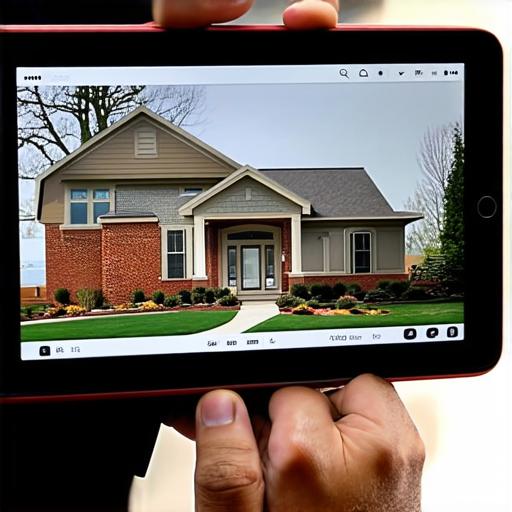Augmented reality (AR) technology is becoming increasingly popular in various industries, and one of the companies that have embraced this technology is Home Depot. The company has introduced an AR feature in its mobile app that allows users to visualize how a product would look like in their home before they make a purchase.
The Basics of Augmented Reality
Before diving into the specifics of utilizing Home Depot’s AR feature, let’s first understand what AR is and how it works. Augmented reality is a technology that overlays digital information on the real world, creating an immersive experience for the user.
Home Depot’s AR Feature
Home Depot’s AR feature is called “See It in Your Space.” This feature allows users to visualize how a product would look like in their home before they make a purchase. The feature uses the camera on the user’s smartphone or tablet to create an augmented reality experience, allowing them to see the product in real-time and get a better sense of its size, shape, and color.
How to Utilize Home Depot’s AR Feature
To utilize Home Depot’s AR feature, you need to have access to the company’s API (Application Programming Interface). You can obtain this by registering for a developer account on Home Depot’s website. Once you have access to the API, you can integrate the AR feature into your app and start using it to enhance your customers’ shopping experience.
1. Choose the Right Products
Before you start integrating the AR feature into your app, you need to choose the right products to showcase. The products you choose should be easy to visualize in 3D and should be relevant to your target audience.
2. Optimize the AR Experience
To optimize the AR experience for your customers, you need to make sure that the AR feature is easy to use and navigate. You should also ensure that the 3D models of the products are accurate and realistic. You can achieve this by using high-quality images and videos and testing the AR feature on different devices and operating systems.
3. Integrate with Your App
Once you have optimized the AR experience, you need to integrate the feature into your app. This involves writing code that will access Home Depot’s API and retrieve the necessary data to create the AR experience. You should also ensure that the AR feature is easy to access within your app and that it blends seamlessly with the rest of the app’s design.
4. Test and Iterate
Finally, you need to test the AR feature thoroughly and iterate based on user feedback. This involves testing the feature on different devices and operating systems, collecting data on how users interact with the feature, and making changes to improve the experience. You should also keep an eye on the latest trends in AR technology and incorporate them into your app to stay ahead of the curve.
Case Studies
To illustrate how Home Depot’s AR feature can be utilized by AR developers, let’s look at a few case studies.
1. IKEA Place
IKEA Place is an AR app that allows users to visualize how IKEA furniture would look like in their home before they make a purchase. The app uses 3D models of IKEA products and overlays them onto the real world, giving users a better sense of the product’s size, shape, and color.
2. Wayfair View in 3D
Wayfair View in 3D is an AR app that allows users to visualize how Wayfair furniture would look like in their home before they make a purchase. The app uses high-quality images and videos of the products and overlays them onto the real world, giving users a better sense of the product’s size, shape, and color.
3. Snapchat Filters
Snapchat filters are a popular way to enhance AR experiences. By integrating Home Depot’s AR feature into your app, you can create custom filters that allow users to visualize how products would look like in their home before they make a purchase. For example, you could create a filter that overlays a 3D model of a new furniture piece onto the user’s room and allows them to see how it would fit in with their existing decor.
Conclusion
Home Depot’s AR feature is an excellent tool for AR developers to enhance their customers’ shopping experience and increase sales. By choosing the right products, optimizing the AR experience, integrating with your app, and testing and iterating based on user feedback, you can create a powerful AR feature that will set your app apart from the competition. As we have seen in our case studies, AR features like IKEA Place, Wayfair View in 3D, and Snapchat filters are all examples of how Home Depot’s AR feature can be utilized to create engaging and immersive experiences for customers.

FAQs
Here are the FAQs section with the corrected HTML code:
1. How do I obtain access to Home Depot’s API?
- You need to register for a developer account on Home Depot’s website to obtain access to the API.
1. What products should I choose to showcase in my AR feature?
- Choose products that are easy to visualize in 3D and are relevant to your target audience.
1. How do I optimize the AR experience for my customers?
- Make sure that the 3D models of the products are accurate and realistic, and test the AR feature on different devices and operating systems.
1. How do I integrate Home Depot’s AR feature into my app?
- Write code that will access Home Depot’s API and retrieve the necessary data to create the AR experience.
1. How do I test and iterate based on user feedback?
- Test the AR feature thoroughly, collect data on how users interact with the feature, and make changes to improve the experience based on user feedback.
